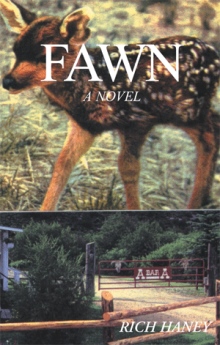Rosebud
Legend of Campfire Stories
by
Book Details
About the Book
Half white, half Sioux and totally beautiful, Rosebud -- from 1876 till 1891, as she aged from fifteen to twenty-nine in the pages of this book -- emerged as the greatest legend of the Indian Campfire Stories all across the Great Plains, an honor she still holds to this day. Madly in love with Lt. David Hamilton Maynadier -- the most influential young officer at Fort Laramie -- Rosebud, in the spring of 1876, cast her lot with Sitting Bull's Hunkpapa Sioux when she sensed the impending demise of the Sioux nation. She saw Custer die at the Little Bighorn on June 25th, 1876; she witnessed Sitting Bull's murder at Standing Rock on December 15th, 1890; and she barely escaped the Massacre at Wounded Knee Creek on December 29th, 1890. Her Sioux nickname was Wanekia ("Angel") but the soldiers that threatened what remained of her beloved Hunkpapas had ample reason to fear her as the very greatest of the Sioux warriors. During those fifteen years -- 1876 to 1890 -- no one, not even her idol Sitting Bull or her friend Crazy Horse, fought as tenaciously or as effectively as Rosebud did to preserve the life and the legacy of the Sioux nation she cherished.
About the Author
Born in Fluvanna County, Virginia, in 1945, Rich Haney began working part-time at WINA Radio in nearby Charlottesville when he was a high school junior. While attending Lynchburg College, he continued to work at WINA on weekends. Then, for eight years, he was Sports Director and Program Director for WINA. During this period he did football play-by-play for Lane High School, then the record-setting, perennial state champions.
He left WINA Radio in Charlottesville to become the Sports Anchor/Director of WTVR-TV, the CBS affiliate in Richmond, Virginia. During his twelve-year stint at WTVR-TV, he also did football and basketball play-by-play on the radio networks of the University of Richmond, the University of Virginia and/or Virginia Tech University. For five years he covered regional sports for the Raycom and CBS networks and also published a sports weekly, The Rich Haney Report, as well as a syndicated newspaper sports column.
After a divorce, Rich moved to Montgomery, Alabama, when his son Tony received a baseball scholarship at Auburn University. While Tony was at Auburn, Rich was the Sports Director/Anchor of WAKA-TV, the CBS affiliate in Montgomery. It was in the Deep South, essentially alone for the first time, that Rich began researching and writing Historic Novels, which soon became his passion. A recently published Civil War novel entitled CHATTAHOOCHEE encouraged him to move to Laramie, Wyoming, where he writes full-time.
SACAJAWEA: Her True Story is Rich's first non-fiction work but, in Laramie, he has also deeply researched and written two Western Novels -- ROSEBUD and FAWN -- that are currently being represented by a New York agent. His particular interest, symbolized by an extensive personal library that he is quite proud of, is the history of the American West, particularly the Plains Indians.
************
Even prior to the soon-to-be ubiquitous dollar coin, which debuts in March of 2000, Sacajawea is already the most memorialized female in American history. Yet, controversy still rages as to whether she died in 1812 in South Dakota or in 1884 in Wyoming. And where is she buried? This book answers those questions by validating the Oral or Traditional History of the Shoshones, her own people, and explains why many white historians, including Ken Burns and Steven Ambrose, are wrong when it comes to America's greatest female icon.




